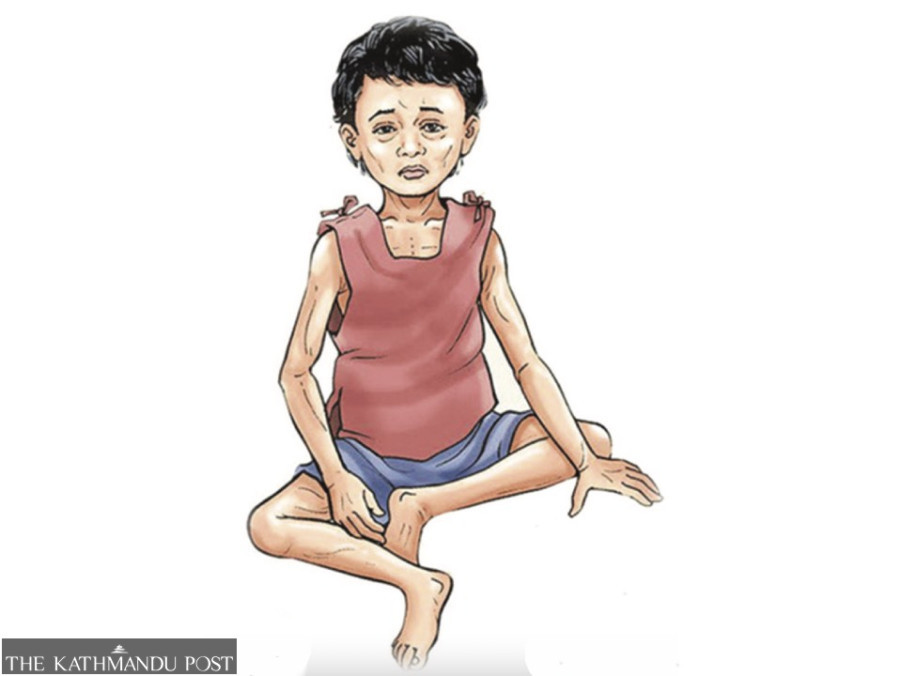Health
An antibiotic apocalypse is coming and Nepal is not ready for it
Antibiotics are overused and misprescribed in both humans and animals across the country. Doctors and researchers say that bacteria are evolving faster than ever, developing resistances to the most commonly used antibiotics, making infections harder to treat.
Tsering Ngodup Lama
When Dawa Gurung started feeling an almost unbearable pain in her abdomen and a burning sensation whenever she urinated, she knew her urinary tract infection had returned. But since it had happened before, Gurung knew exactly what she had to do—head to a local pharmacy, tell the shopkeeper her symptoms and get some antibiotics. It was all routine.
But a few months ago, during one such recurrence, the antibiotics failed to relieve her symptoms. Even after Gurung completed the full antibiotic course, the abdominal pain and burning sensations persisted. That was when Gurung headed to the hospital. Her test results showed that the bacteria causing her infection had developed a resistance to the antibiotics she was taking, rendering the medicine useless.
Cases like Gurung’s are becoming more and more frequent in Kathmandu, say doctors. In Nepal, where antibiotics are overused and misprescribed in both humans and animals, doctors and researchers say that bacteria are evolving faster than ever, developing resistances to the most commonly used antibiotics, making infections harder to treat. This poses a serious medical threat, not just to Nepalis but also the world, and the country’s healthcare systems are ill-equipped to deal with the threat.
And this is not a phenomenon that is limited to Nepal. In the past few decades, antibiotic resistance has emerged as one of the most serious medical threats in the world. In 2018, a World Health Organization report called antibiotic resistance “one of the biggest threats to global health, food security, and development”. The same report also stated that a growing number of infections–such as pneumonia, tuberculosis, gonorrhoea, and salmonellosis–are becoming harder to treat as the antibiotics used to treat them have become less effective.
Ever since Alexander Fleming discovered penicillin, the modern era’s first antibiotic, bacterial resistance has been a constant fear. Penicillin was discovered in 1928 and was instrumental in treating millions of bacterial infections, but by 1940, bacteria had already started to develop resistances. And since then, the pace of resistance has only accelerated.
Resistance to erythromycin, an antibiotic introduced in 1953 and used to treat skin infections, was discovered in 1968. Resistance to ceftazidime, introduced in 1985 to treat joint infections, meningitis, pneumonia, sepsis, and urinary tract infections, was discovered in 1987. Resistance to ceftaroline, a drug introduced in 2010 to treat pneumonia and skin infections, was discovered in 2011.
In 1946, confronted with the fast-developing resistance in bacteria to penicillin, Fleming, in The New York Times, cautioned, “The thoughtless person playing with penicillin treatment is morally responsible for the death of the man who finally succumbs to infection with the penicillin-resistant organism. I hope the evil can be averted.”
But Fleming’s warning has gone unheeded, as can be evidenced by the rapid rise in the number of strains of antibiotic resistant bacteria. Worse, much of this resistance is coming from the developing world, where the arbitrary use of antibiotics is rampant.

Photo: Shutterstock
“Resistant pathogens are in the air we breathe, in public transportations, on door handles and elevator buttons at malls, and most likely in the meat you eat. There’s no escape from them,” says Sameer Mani Dixit, director of research at the Centre for Molecular Dynamics-Nepal. “You are safe only till you get a bacterial infection, and have to take antibiotics.”
Several studies conducted on antibiotic resistance in Nepal paint a grim picture. For a 2016 study, researchers took 739 Escherichia coli (a bacteria that causes infections such as neonatal meningitis, urinary tract infections, and pneumonia) isolates from pediatric patients at the Manmohan Memorial Medical College and the Tribhuvan University Teaching Hospital, both in Kathmandu. The results showed that 64.9 percent of the isolates were multidrug resistant (MDR), and 5 percent were extensively drug resistant (XDR).
In a 2018 study, researchers found that Klebsiella and Coagulase-negative Staphylococci (CoNS), the two most common bacteria causing neonatal sepsis at Patan Hospital, were highly resistant to many commonly used antibiotics.
Hospitals across the country report similar instances of increased resistance to many common antibiotics like nalidixic acid (sold under the trade name NegGram, and used to treat urinary tract infections), ampicillin (sold as Omnipen, Amcill, and Principen, and used to treat respiratory tract infections, urinary tract infections, meningitis), cotrimoxazole (sold as Septra, Bactrim, and used to treat lung infections, ear and intestine infections), ciprofloxacin (sold as Cipro, and used to treat bone and joint infections, skin infections, typhoid fever), moxifloxacin (sold as Avelox, and used to treat pneumonia, conjunctivitis, endocarditis, tuberculosis).
But the problem goes much deeper, say doctors.
“The common belief that if one doesn’t ingest antibiotics, resistant pathogens won’t enter the body is absolutely untrue,” says Rajeev Shrestha, head of Dhulikhel Hospital’s Pharmacovigilance Unit. When Shrestha’s two-year-old son was diagnosed with a urinary tract infection, an antibiotic susceptibility test (a test done to determine which antibiotic would be most effective in treating the infection) revealed that the bacteria-causing the infection was resistant to all the antibiotics against which it was tested, except for nitrofurantoin.
“My son had never taken any antibiotics, and yet the bacteria was resistant to almost all of them,” says Shrestha.
Doctors working at tertiary-level hospitals in Kathmandu say that it has become routine for them to find bacteria resistant to at least four to five antibiotics on every antibiotic susceptibility test they conduct.
“I haven’t come across a single test result where pathogens were sensitive to all of the antibiotics they were tested against,” says Shrestha.
Another reason why the rapid rise in antibiotic-resistant pathogens is so alarming is because in the last few decades, the number of new antibiotics has dwindled significantly. Between 1960 to 1990, 81 new antibiotics were approved for clinical use, but between 1990 to 2018, only 36 new antibiotics were approved, and resistance has already been seen in most of the existing antibiotics the world has.
“New antibiotics are unlikely to be approved in the next 10 years. So, the antibiotics that we currently have are all we have to treat bacterial infections, and resistance has already been seen in many of them,” says Dixit.
For big pharmaceutical companies, it makes much more financial sense to spend their R&D in coming up with drugs for chronic illnesses like cancer, diabetes and Alzheimer’s, where patients have to be under medication for years. Antibiotics, which are usually taken only for a few days or weeks, are generally not worth their R&D cost.
A 2015 cost-benefit analysis by the Office of Health Economics in London calculated that the net present value (NPV) of a new antibiotic is only about $50 million, compared to approximately $1 billion for a drug used to treat a neuromuscular disease.
How bacteria develop resistances
Antibiotics work by attacking bacterial ribosomes, which are responsible for producing protein. A bacteria whose ribosomes are compromised cannot survive. Some antibiotics attack the cell walls of bacteria, which stymies their growth, while others break the bacteria’s DNA strands, killing them. But for bacteria, the oldest living organisms in the world, such threats are not new, and they’ve been able to survive on earth for billions of years by evolving and developing resistances.
The more bacteria are exposed to threats, the quicker they develop resistances, and this is the reason why many developed countries do not permit the sales of antibiotics without prescription. Even though Nepal’s Drugs Act 1978, states that antibiotics can only be sold on prescription, in practice, things are quite relaxed.
“This is particularly serious because pharmacies are the first line of medication in Nepal, and people usually go to local pharmacies first when they fall sick,” says Shrestha. “In these pharmacies, antibiotics are sold like chocolates, and misprescription is rampant.”
When 26-year-old Roshan went to a local pharmacy with a bad cold and a sore throat, the pharmacist handed him two files of amoxicillin, an antibiotic. Most colds and sore throats are caused by viruses and antibiotics only work on bacterial infections; they have no effect whatsoever on viral infections.
“We see a lot of misprescription, even in ophthalmic cases. A lot of patients who come to our hospital with eye redness have been prescribed antibiotics by pharmacies. This is alarming because eye redness is not a bacterial infection, and antibiotics have no effect,” says Dr Rachana Singh Rana, a cornea specialist at the Tilganga Institute of Ophthalmology.
Many medical professionals say that if the government is serious about combating antibiotic resistance in the country, the prohibition on the sale of antibiotics without a prescription must be strictly imposed.
“Doctors, especially those working in clinics, are also pressured by patients to prescribe antibiotics for infections because people here are so used to taking antibiotics for everything, and if doctors don’t prescribe antibiotics, they risk losing their patients to another doctor who will,” says Shrestha.
Misprescription is also likely to occur when doctors are unable to diagnose whether an infection is viral or bacterial, based on empirical evidence. “Even though there are tests to determine whether an infection is viral or bacterial, they are expensive and not all clinics and hospitals have access to these machines,” says Rana.
Quicker and cheaper diagnostic tests to determine whether an infection is bacterial or viral are crucial in the fight against antibiotic resistance.
Hospitals play a very important role in combating antibiotic resistance. “One of the most effective ways to curb misprescribing and overuse of antibiotics in hospitals is by having an antibiotic stewardship programme in every hospital,” says Dixit. “This programme will ensure that doctors only prescribe antibiotics after consulting with a team of senior doctors and nurses, pharmacists, and microbiologists. The government should make it mandatory for every hospital in the country to have the programme.”
Medical professionals also suggest that the government set up a centralised database that includes antibiotics and their resistance, and share the database with hospitals and clinics all across the country. The database, says the team at the Pharmacovigilance Unit in Dhulikhel Hospital, should not only include data from hospitals, but also private pathology labs, and research conducted on antibiotic resistance in the country. That way, doctors will have more empirical evidence when they prescribe antibiotics, reducing the chances of prescribing antibiotics that have already developed rapid resistance.
Even though taking antibiotics does not cause any immediate harm to the patient, it does increase the chances of pathogens inside the body developing resistance. “So the next time the patient gets a bacterial infection and really does need antibiotics, the drugs might not be as effective,” says Rana. Moreover, antibiotics not only kill pathogens, but they also kill good bacteria that reside in our gut and help keep illnesses at bay.
Another important role hospitals play in stemming antibiotic resistance is by strictly maintaining hospital hygiene. Hospitals, according to the Pharmacovigilance Unit, are swarming with resistant pathogens, and it is very important that hygiene and cleanliness is maintained at all times to minimise the spread of hospital-acquired infections. “You don’t want patients who are recovering from surgeries to get transmitted with pathogens from hospital staff, visitors, fellow patients, that will slow their recovery or even put their lives at risks. You also don’t want patients’ pathogens to get transmitted to hospital staff and visitors,” says Shrestha.
According to WHO, one in 10 patients gets an infection while receiving care and more than 50 percent of surgical site infections can be antibiotic-resistant. To minimise hospital-acquired infections, organisations like WHO have set guidelines that hospitals can follow to prevent and minimise hospital-acquired infections. “Washing and sanitising hands is one of the most effective ways to minimise hospital-acquired infections,” says Shrestha.
At Dhulikhel Hospital, according to the hospital’s Pharmacovigilance Unit, it’s standard protocol for doctors to sanitise their hands with sanitisers after every patient they see. The hospital also uses autoclave air filters in its operation theatres. Their surgical tools and equipment are properly sterilised, and even the quality of the water at the hospital is monitored regularly. Random swabs from hands of the hospital’s staff are taken to keep track of the most common pathogens in the hospital.
Photo: Shutterstock
The team also suggests strict monitoring of how domestic pharmaceutical companies are treating and dumping their waste.
In Nepal, another factor contributing to antibiotic resistance is underdosing on antibiotics. Underdosing is when patients do not complete the full course of antibiotics. “Many who take antibiotics aren’t aware that for antibiotics to work effectively, they have to take the full course of drugs. So, many patients stop taking antibiotics when they start feeling better,” says Shrestha. “There are also many who don’t take the complete course of antibiotics because they can’t afford to buy the full course of drugs.”
An increasing number of recent studies, however, dispute that a full course of antibiotics must be completed. These studies argue that patients, by continuing to take antibiotics even after symptoms have disappeared, prolong pathogens’ exposure to antibiotics and risk resistance.
WHO, in an online Q&A on the topic, agrees that shorter antibiotic courses make more sense as they are cheaper and patients are more likely to complete the course. But it also explains that feeling better doesn’t always mean that the infection has been completely eliminated. Patients should always follow their doctor’s advice, says the WHO.
Rampant use of antibiotics on livestock
But it is not just humans who are the vectors of these resistant bacteria. Many of them come from wholly non-human sources. The extensive use of antibiotics on livestock is one of the major contributors to the growth of antibiotic resistance.
In a 2014 study, researchers took 139 samples of dressed porcine carcass from 10 different pork shops in Chitwan. Researchers found that 72.2 percent of the samples were resistant to Colistin, one of the most powerful antibiotics that is used when most others fail.
“Under the law, it is illegal to sell veterinary antibiotics without the prescription of a veterinarian,” says Dr Gauriman Shrestha, a senior veterinarian. “But in the villages, you’ll find Village Animal Health Workers, who are not allowed to prescribe or administer antibiotics, but are doing so anyway. Since they do not have the technical knowhow, cases of these health workers misprescribing antibiotics are rampant. Many of them do not know the correct doses of antibiotics for animals, which results in overuse and underuse of antibiotics. Just like in humans, misprescription, overuse and underuse of antibiotics in animals give rise to antibiotic resistance.”
The situation, say many doctors, is more serious in poultry and aquaculture. “Chicken in poultry farms are fed with feed laced with antibiotics to prevent them from getting sick, and in a lot of fish farms, antibiotics are simply mixed in the ponds,” says Dixit. “The animals are fed antibiotics on a daily basis as a preventive measure against infections.”
Pathogens are transmitted into the environment through animal waste, and into humans when their meat is consumed.
“The government should let the Department of Livestock Services monitor and regulate the sale of animal antibiotics, which is currently under the jurisdiction of the Department of Drug Administration, which also monitors and regulates drugs meant for humans,” says Gauriman. “The Department of Drug Administration already has already a lot on its plate, and it does not have the resources to monitor animal drugs.”
According to a 2019 UN report, drug-resistant diseases cause at least 700,000 deaths globally every year, and by 2050, the figure could quickly rise to 10 million deaths a year. Many studies have already marked 2050 as the post antibiotic era. While 10 million might sound like a very high number, doctors and researchers say that this is actually a conservative estimate.
“The numbers make absolute sense because the odds are stacked against us. Bacteria strains that are sensitive to antibiotics are developing resistance at an alarming pace; we are seeing an emergence of new diseases that’ll require surgeries, which increases exposure to bacterial infection, and there are very few new antibiotics coming our way. It’s a fatal combination,” says Dixit. “Without new antibiotics, and increasing pathogen resistance to antibiotics that we have, we are looking at a future where even minor wounds, caesarean sections and elective surgeries could kill people.




 7.12°C Kathmandu
7.12°C Kathmandu





